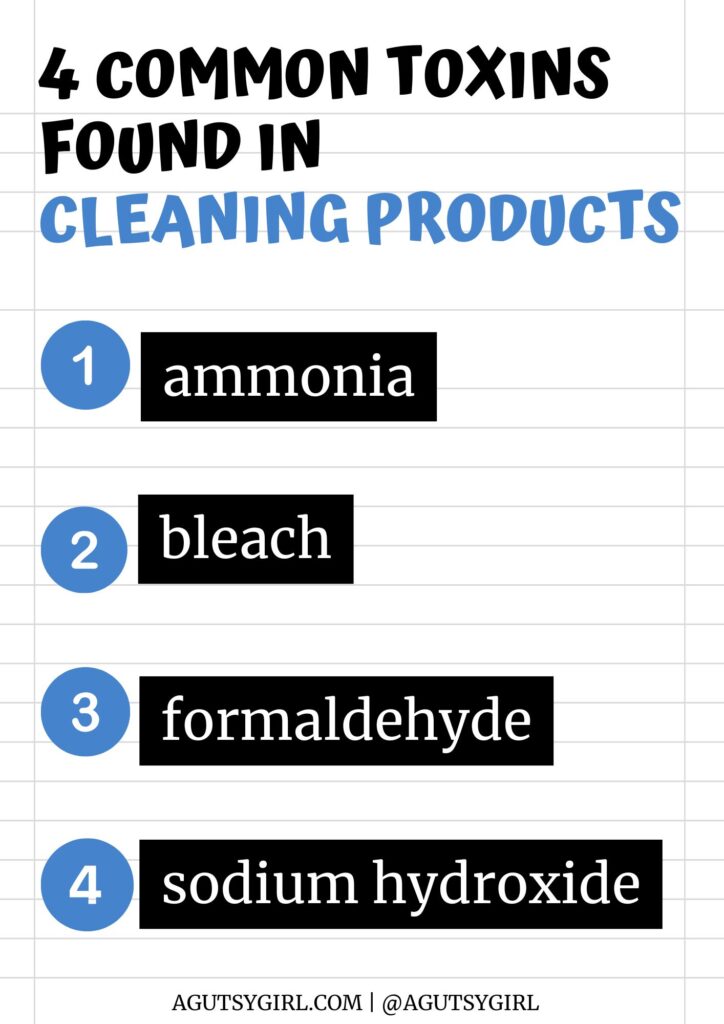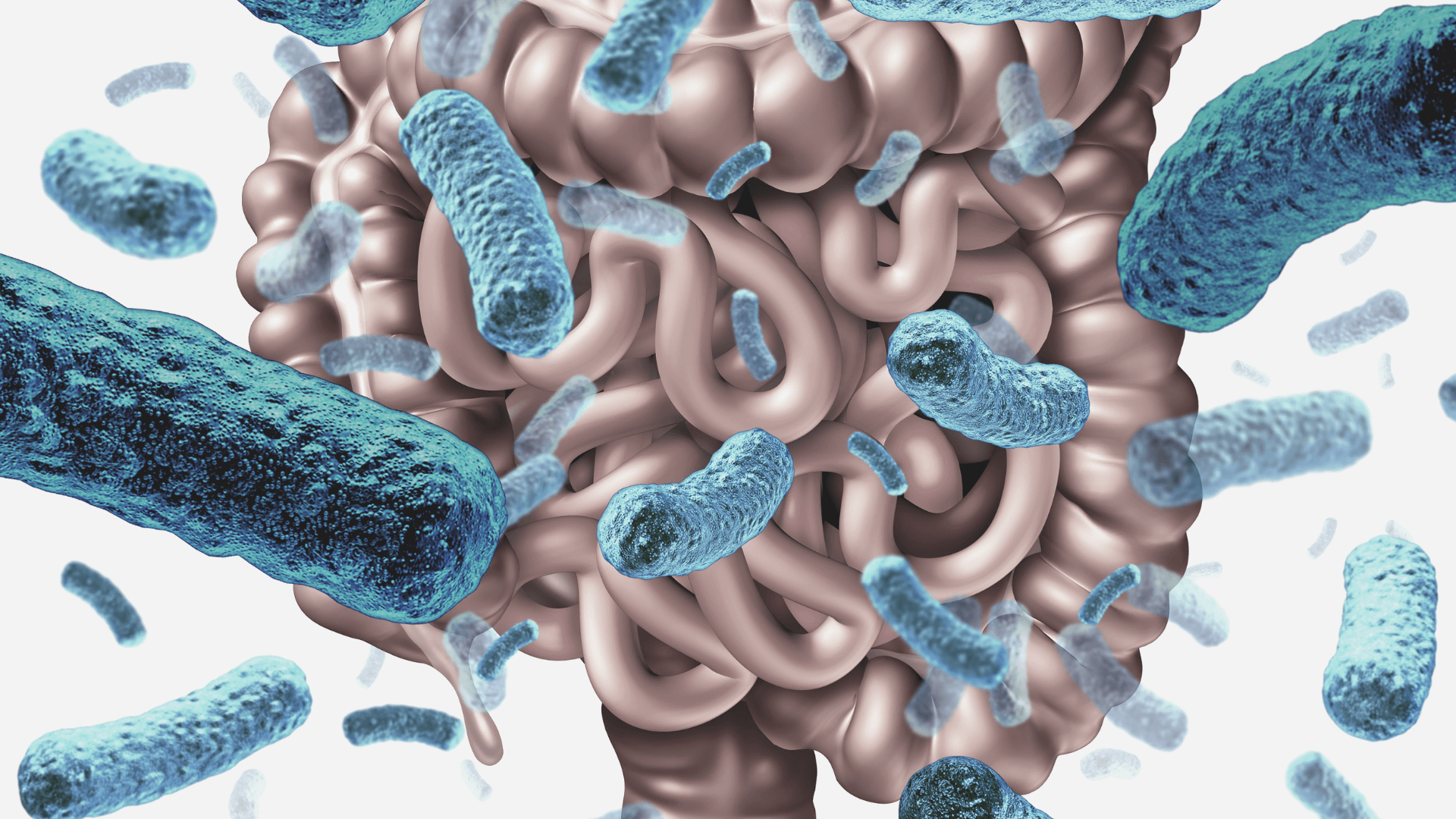Do you know what 4 common toxins found in cleaning products are?
Gross.
That’s what.
But really…..
Why “Clean” Cleaning Products Matter
You’ll spend forever on the lifestyle pillar to my 3 Pillars for Ultimate Gut Healing.
Not only is it the hardest pillar to conquer, but I don’t truly believe we ever “conquer” it. It’s a massive pillar that’s an ongoing focus.
You don’t just switch to safer skincare or home cleaning products in order to heal your gut, then heal the gut and go back to the old ways.
It doesn’t – it can’t – work that way.
If it did, you’d never reach the gut health phase; you’d constantly be recycling through gut healing paths and tactics.
Kitchen Counter Spray
My mom recently asked, “What’s the kitchen counter spray you’re using to make the kitchen smell so good?”
I replied, “Oh, it’s no big deal. I just take the Dr. Bronner’s Pure Castile Liquid Soap: LAVENDER, mix with some water and waaaaa laaaaaa.”
That’s it.
A few days later, same scenario happened with different people (friends who came to town to visit).
BTW – Lavender is my personal jam. Like, I’m borderline obsessed with the scent. But if it’s not yours, Dr. Bronner’s also has:
- Peppermint
- Tea Tree
- Eucalyptus
- Almond
- Baby Unscented
And this actually excites me.
Why?
Because you can clean with scents you love.
AND, you will also be getting rid of 4 common cleaning product toxins.
4 Common Toxins Found in Cleaning Products
Click HERE to save these 4 common toxins found in cleaning products for later.

Ammonia
Ammonia is a colorless gas with a distinct odor. It is a building-block chemical and a key component in the manufacture of many products people use every day.According to the NIH, “Household and industrial cleaners contain anywhere from 5 to 25% of ammonia in dissolved form. Hence the residents, especially children of such households, are at an increased risk for accidental or suicidal ingestion exposure. The spillage of such products can lead to significant inhalational exposure as well.”- Bleach
Bleach is a chemical that can remove or lighten color, usually via oxidation. It is the common name for a solution of 2.5% sodium hypochlorite in water. It’s also called chlorine bleach or liquid bleach. It’s a disinfectant; not a cleaner.The NIH states, “They are frequently used for cleaning and disinfection; bleaches kill or control most types of viruses, bacteria, molds, mildews, and algae.” Also make note that when ammonia and chlorine bleach are accidentally mixed together, they create dangerous chloramine gas.
- Formaldehyde
Formaldehyde is a simple chemical compound made of hydrogen, oxygen and carbon.OSHA states, “Formaldehyde is a sensitizing agent that can cause an immune system response upon initial exposure. It is also a cancer hazard. Acute exposure is highly irritating to the eyes, nose, and throat and can make anyone exposed cough and wheeze. Subsequent exposure may cause severe allergic reactions of the skin, eyes and respiratory tract. Ingestion of formaldehyde can be fatal, and long-term exposure to low levels in the air or on the skin can cause asthma-like respiratory problems and skin irritation such as dermatitis and itching.”
- Sodium Hydroxide
Sodium hydroxide (NaOH), also known as caustic soda or lye, is a highly versatile substance used in a variety of manufacturing processes. It is a co-product of chlorine production.According to the Agency for Toxic Substances & Disease Registry, “Chronic exposure to dusts or mists of sodium hydroxide may lead to ulceration of the nasal passages. Chronic skin exposures can lead to dermatitis. Ingestion may lead to perforation of the gastrointestinal tract or stricture formation.”
Go check your cleaning supplies.
Do you see those ingredients?
Here are common cleaning products where you’ll find the above.
- Ammonia: glass and window cleaners, multi-purpose cleaners, toilet bowl cleaners, shining waxes, and oven and drain cleaners
- Bleach: toilet bowl cleaner, stain remover, and all-purpose cleaners
- Formaldehyde: laundry and dish detergent
- Sodium Hydroxide: commercial drain and oven cleaners, soap and detergents

Toxins in Cleaning Products and Your Gut
Alright, so let’s chat about the gut correlation for a quick second to help you truly understand why cleaning products would even be part of the lifestyle equation.
Here are some facts:
- Bleach reacts with biological tissues, causing irritation and cell death by protein denaturation. This reaction is most severe for the more sensitive tissues such as the respiratory system and eyes and less severe for more resistant tissues such as GI tract (which is accustomed to low pH) and skin (which is adapted to be in contact with the environment).
- Ingestion of sodium hydroxide can cause spontaneous vomiting, chest and abdominal pain, and difficulty swallowing with drooling. Corrosive injury to the mouth, throat, esophagus, and stomach is extremely rapid and may result in perforation, hemorrhage, and narrowing of the gastrointestinal tract.
- A study was conducted where it was found that exposure to formaldehyde perturbs the mouse gut microbiome.
And while you can find direct correlations between toxic chemicals in cleaning supplies and your gut, one of the best reflections of what’s happening in your gut can be found on your skin.

Skin Reflection
The skin is a great reflection of what’s going on inside because:
- Your skin is your largest organ.
- The skin is a detox organ: It’s involved with elimination…..which means it can also let toxins in.
Remember, this is why gut health issues are often evident on the surface with rashes, acne, eczema, etc.
Mine was through Perioral Dermatitis.
Sources: HERE, HERE, HERE, HERE, HERE, HERE, HERE, and HERE.
What to do with your toxic household cleaning supplies
I’m not telling you that you need to throw everything out all at once.
I’m just saying that the fact remains, they are toxic.
And if you’re looking to live a healthier, more vibrant overall life, consider swapping them out as they run out.
You can make small changes, one day at a time.
That’s what I did, and you’ll see the fruits of that labor over time.
If you liked this post, you might also enjoy:
- Healthy Cleaning for a Healthy Gut
- Skin Health and Endocrine Disruptors
- 14 Things to Stock Up On {That Will Actually Make a Difference}
Xox,
SKH
🤰 bloating be gone! weight loss through optimal gut health for women
💃ʜᴇᴀʟ ʏᴏᴜʀ ɢᴜᴛ. ʜᴇᴀʟ ʏᴏᴜʀ ʟɪfe.
🫶🏻 founder gutbyome.com






